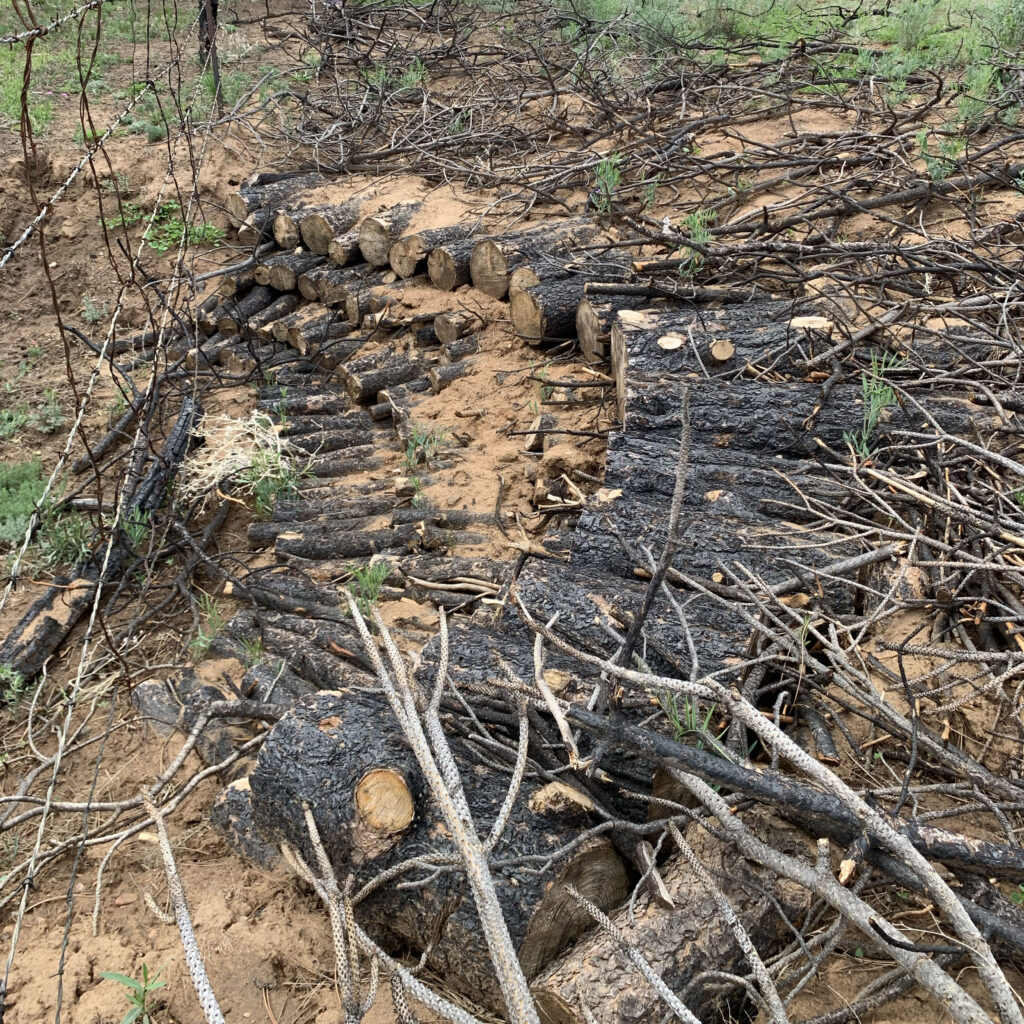Thousands of people have lost their forests to high-intensity, crown-torching wildfires in Mora, San Miguel, Taos, and Lincoln Counties in the last two years.
As people grapple with their changed post-fire landscape, one of their questions is what to do with the burned trees. While there are no easy answers or quick solutions, there are some ways to use the burned wood to help restore burned property. Doing so can be part of the healing process for both land and people. Some people will already have the skills and tools to work with their burned trees. Others may need to hire contractors and crews to help with the work.
The costs of removing burned trees in the Hermit’s Peak/Calf Canyon burn scar, and restoring land, may be covered by FEMA’s HPCC Claims Office. The Natural Resources Conservation Service (NRCS) has an agreement with the HPCC Claims Office to assess fire and flood damaged lands and provide a restoration plan and an estimated cost of the work. If you have filed a claim and have a FEMA Navigator, ask them about the NRCS program and covering the costs of restoration work. Most importantly, if you haven’t filed a Notice of Loss with FEMA related to the fire, the deadline is Nov. 14, 2024. You must file a Notice of Loss to receive compensation.
For those landowners dealing with burned trees, here are a few options:

1. Burned trees pose a hazard to roads, powerlines, and structures. These hazard trees should be removed and may require a contractor to do so safely. If the trees are near a powerline, alert your local power company. The Las Vegas District Office of the New Mexico Forestry Division has a hazard tree removal program underway. You can apply to have the district help remove hazard trees. Kristin Sanders, a forester with the Las Vegas District Office, is available to conduct property assessments for reforestation efforts as well. Email her at: kristen.sanders@emnrd.nm.gov
2. Use burned trees to reduce erosion on burned hillslopes. Larger trees can be cut and felled perpendicular to slopes and secured in place to slow down water and prevent soil washing off. These trees can also create microclimates, providing shade on the uphill side and a spot to catch moisture for seedlings. You can find the free NMFWRI Contour Log Felling Guide at nmfwri.org. Smaller diameter burned trees can also be cut and laid down as log mats, log run downs, and other structures to capture sediment and reduce erosion. More land restoration guides will be published soon on the NMFWRI website.

Some local sawmills may take burned logs, depending on trunk diameter, length, and level of internal decay. Call local sawmills to find out what they accept. Las Vegas and Mora have several locally owned sawmills.
It is good to leave some burned trees to act as snags for raptors and other birds.
Trees that don’t pose a hazard and aren’t going to be hauled to a sawmill or used in erosion control can be left in place. They will eventually fall on their own and decompose into the soil.
When fire burns through forests it also impacts watersheds. Find resources regarding post-fire impacts on watersheds at Hermit’s Peak Watershed Alliance.
Find out more about the New Mexico Forestry Division’s Forest Health programs at https://www.emnrd.nm.gov/sfd/.
It is tough to look out at burned trees where there once was a green forest. But using the trees to help restore the land can provide landowners with one more step down the path to recovery.
The New Mexico Forest and Watershed Restoration Institute, based at Highlands University, is a federally funded institute that engages with agencies, land managers, students, and communities in forest and watershed restoration and post-fire recovery through ecological monitoring, spatial data analysis, research, collaborative conservation, hands-on workshops, and youth programs. NMFWRI is an equal opportunity provider. Go to nmfwri.org for more information on our programs.
